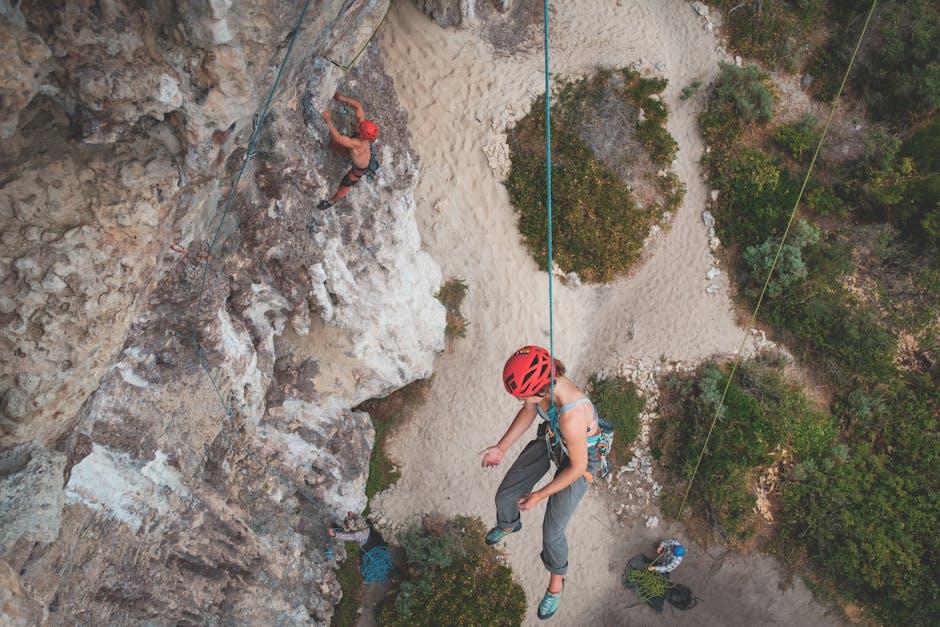In recent years, the popularity of adventure sports has surged, attracting thrill-seekers from all walks of life to partake in activities ranging from skydiving to mountain climbing. As this trend continues to rise, so does the demand for travel insurance that covers the unique risks associated with such high-adrenaline pursuits. However, a growing debate centers on whether travel insurance companies are overcharging for adventure sports coverage, prompting consumers and industry experts alike to scrutinize the pricing structures and risk assessments employed by insurers. This article delves into the intricacies of adventure sports insurance, examining the factors that influence premium costs and evaluating whether these charges are justified or inflated, ultimately seeking to provide a comprehensive understanding of this complex issue.
Understanding the Cost Structure of Adventure Sports Coverage
When evaluating the cost structure of coverage for adventure sports, several key components contribute to the premium rates. Primarily, insurers factor in the inherent risks associated with activities such as skydiving, rock climbing, or scuba diving. These sports carry a higher probability of accidents and injuries, which in turn increases the likelihood of claims. As a result, insurance providers often implement higher premiums to balance potential payouts.
Furthermore, the administrative expenses associated with underwriting such specialized policies also play a significant role. This includes costs for assessing risk levels, verifying qualifications of participants, and maintaining comprehensive support systems for claims processing. Additional elements that may influence pricing include:
- Coverage limits: Higher limits on medical expenses or evacuation services can increase costs.
- Policy exclusions: Certain high-risk activities might not be covered, affecting overall pricing.
- Geographical factors: Coverage in remote or politically unstable regions can result in higher premiums.
Understanding these factors provides insight into why adventure sports coverage may appear costly and helps consumers make informed decisions when selecting their travel insurance.

Evaluating Risk Factors and Their Impact on Premiums
When determining premiums for adventure sports coverage, travel insurance companies meticulously evaluate various risk factors. These factors include the nature of the activity, the participant’s experience level, and the destination’s safety conditions. High-risk activities, such as skydiving or bungee jumping, inherently carry a greater potential for injury, prompting insurers to set higher premiums to offset potential claims. Additionally, the experience level of the insured plays a crucial role; seasoned adventurers may enjoy slightly lower premiums compared to novices due to their familiarity with safety protocols.
Other elements impacting premiums include the location of the activity. Countries with robust healthcare systems and efficient emergency response services might lead to more favorable rates compared to remote areas with limited medical facilities. Insurers also consider the frequency and duration of the activity, as frequent participation increases the likelihood of incidents. By analyzing these diverse factors, insurance companies aim to balance the risk and cost, ensuring coverage is both comprehensive and equitable.

Comparative Analysis of Leading Travel Insurance Providers
When delving into the realm of travel insurance, particularly for those with a penchant for adventure sports, it’s crucial to understand how different providers structure their coverage. A comparative analysis reveals that while some companies offer comprehensive packages that include a wide range of activities, others require separate add-ons for specific sports, often at a premium. Adventure sports enthusiasts should be particularly vigilant about the fine print, as coverage can vary widely in terms of the sports included, the geographical scope, and the level of risk covered.
Among the leading providers, there are distinct differences in pricing strategies and coverage options. Some key points to consider include:
- Standard vs. Add-on Coverage: Some insurers incorporate adventure sports in their standard plans, while others offer it as an additional option, which can significantly affect the overall cost.
- Activity-Specific Limitations: Certain providers have exclusions or higher deductibles for high-risk activities like skydiving or scuba diving.
- Geographical Restrictions: Coverage may vary depending on the location of the activity, with some policies excluding coverage in certain countries known for high-risk sports.
- Claim Processes and Limits: It’s important to evaluate the claim process and any caps on payouts, as these can impact the perceived value of the policy.
By scrutinizing these aspects, travelers can make informed decisions, ensuring they are adequately protected without overpaying for unnecessary coverage.

Strategies for Obtaining Affordable Adventure Sports Insurance
Exploring the world of adventure sports is thrilling, but the cost of insurance can sometimes feel like a daunting mountain to climb. Fortunately, there are several strategies to help secure more affordable coverage. Start by comparing policies from different providers. While one company might offer a high premium, another might provide a competitive rate with similar coverage. It’s also beneficial to bundle your insurance needs. Many insurers offer discounts if you purchase multiple types of insurance from them, such as combining travel and adventure sports coverage.
Additionally, consider customizing your coverage. Some insurers allow you to select only the activities you plan to engage in, rather than opting for a blanket policy that covers everything. This can significantly reduce costs. Another tip is to increase your deductible. While this means you’ll pay more out-of-pocket if you need to make a claim, it can lower your premium. Lastly, look for seasonal discounts or special promotions. Insurance companies sometimes offer deals during off-peak times, which can be a great opportunity to save on costs while planning your next adventure.

